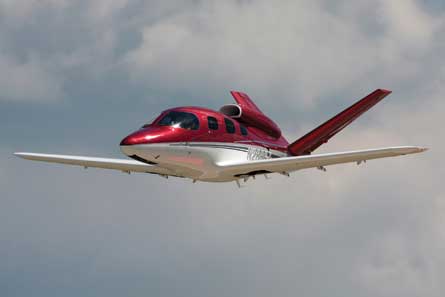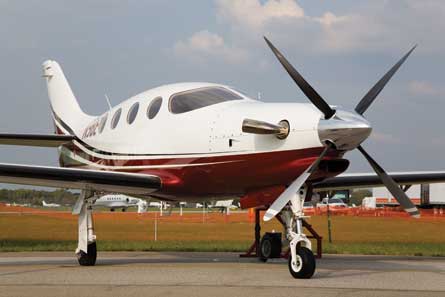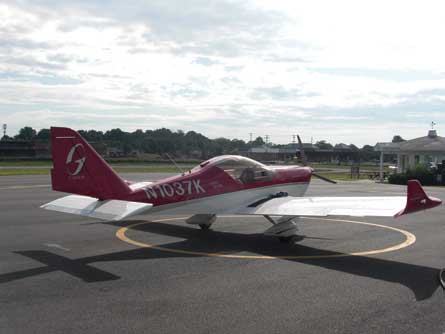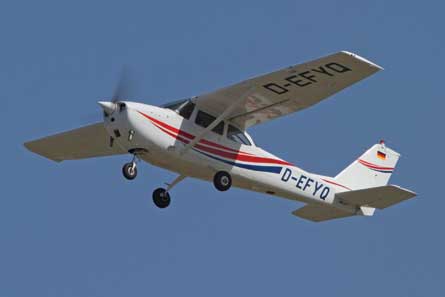A spike in optimism tends to accompany the annual gathering of the general aviation faithful in Oshkosh, Wisconsin for the Experimental Aircraft Association's AirVenture show, where this year's festivities will include a tribute to design luminary Burt Rutan. Yet the general aviation sector has had its share of setbacks lately.
One was the retirement in May of staunch GA supporter and Cessna chief executive Jack Pelton, after continued losses at the Wichita-based manufacturer.
Cessna is not alone in the struggle. According to the General Aviation Manufacturers Association (GAMA), total shipments of GA aircraft worldwide in the first quarter this year were down by nearly 5% from 2010.
Year on year, 2010 shipments were down by more than 11% from 2009, which in turn was more than 40% lower than in 2008. In May, Pete Bunce, president and chief executive of GAMA, said: "This has been a very difficult year to date as a result of the slow economic recovery in North America and Europe."
 |
|---|
© AirTeamImages |
Capital from China should boost Cirrus's hopes for its Vision |
Other pressing issues include a battle to protect the GPS navigation source from interference by a 4G broadband network conditionally approved by the Federal Communications Commission this year. Although broadband wholesaler LightSquared decided to amend its operating plan - after a July final report by a government/industry technical group revealed severe interference problems - the alternative proposal may also affect GPS, a navigation source ubiquitous in GA. There is also mounting pressure from environmental groups to eliminate lead from avgas ahead of industry programmes designed to create alternatives.
However, Bunce offers a counter-argument: "Simply put, lead remains in avgas to keep people aboard piston-engine aircraft safe. It keeps those engines from ripping themselves apart in flight."
Bunce says industry groups are developing a "very-low lead" standard that will reduce lead content by 20%, as an interim step towards non-lead gas.
START OF A RECOVERY
Economic recovery is ongoing, albeit more slowly than anticipated. In the most recent GAMA data, the piston-powered sector showed promise with a 13.3% increase in deliveries in the first quarter of 2011, compared with the same period in 2010. "This may be indicative of the start of a recovery in the traditional markets," Bunce said.
 |
|---|
© AirTeamImages |
Epic Aircraft has restarted owner-assisted production of its experimental Epic LT turboprop |
Despite being considered a controversial move by some, the capital injection Cirrus has received from China's CAIGA - the general aviation arm of AVIC - should reignite growth of the manufacturer's product line, including the single-engined Vision jet. CAIGA completed the 100% acquisition of Minnesota-based Cirrus, previously majority-owned by Bahrain-based Arcapita, in June. But this year Epic Aircraft restarted owner-assisted production of its experimental Epic LT turboprop after winning back-shared production rights with AVIC, which had purchased the company out of bankruptcy last year (see Flight Test P36).
The trials and tribulations of GA were forgotten on 30 June, when a mission conducted with a light sport aircraft in the USA served to highlight the enduring flexibility and mystique of the sector, despite the various assaults it has endured.
 |
|---|
© John Croft |
The Gobosh 7CC on which Flight International flew on 30 June |
A red-and-white, two-seater Polish-built Gobosh 700 LSA was carrying a special payload when it landed at the Brookhaven airport (KHWV) on Long Island to the delight of people waiting behind the fence at the GA airport's operations building. Flight International had joined private pilot Pete Merski on the 2h VFR flight from Maryland.
Unencumbered by general aviation's plight, this group saw only the good made possible by a small, single-engined aircraft with only enough room for two pilots and a couple of cat-sized cages - namely, the delivery of five puppies rescued from almost-certain euthanasia in North Carolina.
Organised by Long Island-based Colleen Fennell, who started non-profit organisation Save a Dog a Day, the group converged on the airport to either adopt puppies or provide temporary foster homes for them.
 |
|---|
© AirTeamImages |
The Cessna 172. Its manufacturer's chief executive Jack Pelton, a GA supporter, retired in May |
Fennell depends on a network of 10 or so volunteer pilots with GA aircraft that learn of missions via a web service called Pilots N Paws. The pilots unite to bring dogs of all sizes and ages from "kill shelters" in places such as North Carolina up to Long Island in several stages.
Generally, Merski only flies puppies because of his small aircraft, and typically flies only half the route - North Carolina to his home state of Maryland. To date, he says he has rescued 42 puppies and is keen to help many more.
On our 30 June flight, we departed the ultra-secure Washington DC airspace with a specially assigned transponder code, climbing to 7,500ft and ultimately 9,500ft on a northeast-bound course line. This allowed us to fly unencumbered by radio-reporting requirements above bustling Philadelphia and New York City, under the dazzling azure sky enveloping the low-wing Gobosh's big bulbous canopy.
Except for several seconds of rough-running engine caused by a hint of carburettor ice on the descent in humid air back into Washington - a problem quickly solved by carburettor heat - the trip went without a hitch.
This was testament to the new aircraft's condition, an intuitive GPS-driven, Dynon-integrated panel and Merski's professional approach to flying, despite having only 275h in his logbook and little more than one year as a certified pilot.
With that kind of freedom comes responsibility that can sometimes be abused. According to the US National Transportation Safety Board, the GA fatality rate is six times that of small commuter and air-taxi aircraft, and 40 times that of large transport aircraft.
SAFETY IMPROVEMENTS
"Perhaps what is most distressing is that the causes of GA accidents are almost always a repeat of the circumstances of previous accidents," the board stated as it placed GA safety on its "10 most wanted" safety improvements list for the first time.
Some in the industry felt the comparisons with other sectors were inappropriate, given the wide range of operations that take place on any given day in the GA realm.
"There is an understandable tendency to compare GA with the airlines, but in most cases GA flight operations are different in so many ways that the comparison is meaningless," Bruce Landsberg, president of the AOPA Foundation - the philanthropic arm of the Aircraft Owners and Pilots Association - said.
Landsberg argues that targeting specific educational programmes aimed at boosting safety would be much more effective.
Watch footage of John Croft's dogday at the AirVenture show at Oshkosh |
Source: Flight International
















